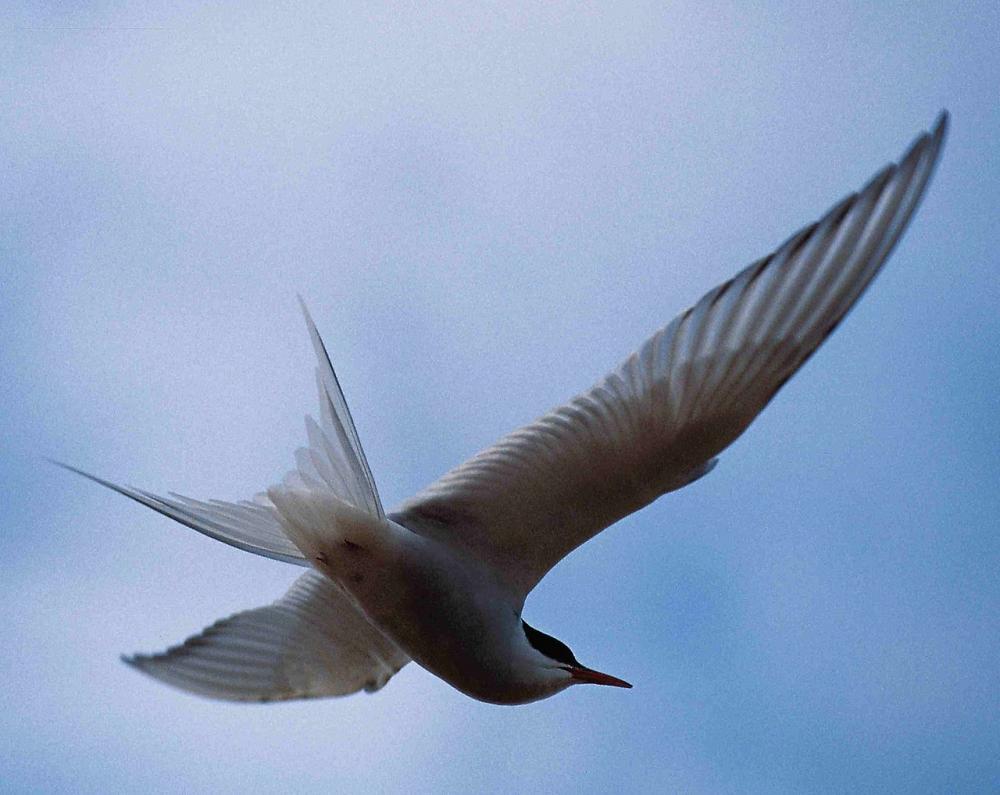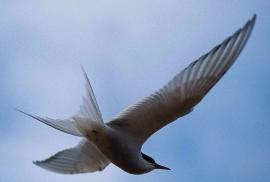Guide to Boreal Birds
Overview
These terns annually perform spectacular migrations, every fall heading eastward across the Atlantic and down the west coasts of Europe and Africa to winter in the Antarctic Ocean. In spring they return north, following the East Coast of South and North America, a round-trip that can total 22,000 miles (35,000 kilometers). They see more daylight than any other living creature since they are in both the Arctic and Antarctic during the periods of longest days. During the northern winter, this species is more truly oceanic than its close relatives, feeding chiefly on small seagoing shrimp and other planktonic animals. The Arctic Tern's harsh, rasping, high-pitched cry makes a colony a noisy place. All members assemble to mob an intruder. The nests and eggs left unattended during an attack are so well camouflaged that a predator is not likely to find them. These terns attack so fiercely that human observers have to protect their heads when walking in a colony.
Description
14-17" (36-43 cm). Deeply forked tail. Similar to Common Tern but underparts grayer, bill blood-red, legs shorter, tail longer.
Voice
Harsh tee-ar or kip-kip-kip-tee-ar, higher pitched than call of Common Tern.
Nesting
2 spotted olive-buff eggs in a shallow depression in the ground, sometimes lined with grass or shells. Nests in colonies, usually on islands or protected sand spits.
Habitat
Coastal islands and beaches; also on tundra in summer.
Range/Migration
Breeds from Aleutians, northern Alaska, and northern Canada east to Ellesmere Island and Newfoundland, and south to northern British Columbia, northern Manitoba, Quebec, and Massachusetts. Winters at sea in Southern Hemisphere. Also breeds in northern Eurasia.



